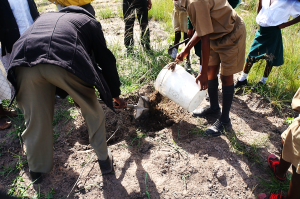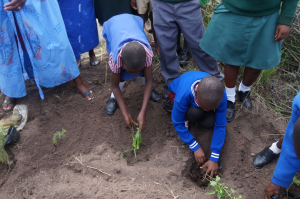SCOPE is a vibrant and practical education programme of the Zimbabwe Institute of permaculture (ZIP) registered as a welfare organization (W.O. 12/92).
The SCOPE resilience initiative is a response to the crisis of energy descent, anthropogenically -climate chaos, land degradation and biodiversity loss created through ignorant and unconscious/ living on this planet. It is an attempt to encourage the adoption of green technology, particularly lo-tech solutions that can be implemented using recycled and re-purposed materials. It is an attempt to encourage the adoption of green technology, particularly lo-tech solutions that can be implemented using recycled and locally available resources.
Vision
Green Schools and colleges that serve as learning and demonstration centers for communities, in contributing towards building a citizenry that is consciously working towards long term social, economic and environmental stability.
Mission
To increase the level of environmental knowledge, literacy and stewardship among all sectors of the community. Including children, youths, policy makers and the business world through an integrated approach.
Values
- Child friendly(investigate, appropriate, fun exciting and interesting activities and exercises focusing on experimenting and problem-solving to convey the ILUD concepts)
- Consider social economic and ecological (SEE) aspects in all steps.
- Encourage creativity, innovation and openness in the content and packaging of programme.
- Allow evolution and flexibility and , appropriate and need-driven rather than prescriptive.
- Integrate traditional and local culture, values and knowledge where appropriate
- Integrate with existing government /non government Programmes as much as possible.
- Encourage transformation towards a holistic world view
- Build correctedness between people and nature.
- Keep spreading involvement( of Children, staff, parents, community)
- Encourage efficient teamwork for action and continuity.
- Build a sense of belonging to a movement ( on local, nation and global levels)
Impact on Goal
- To protect and improve the environment and preparedness of children and youth in solving environmental risks and uncertainties in a changing climate.
Our Belief
Children and youth are the agents of change and real transformation. Leading to Thriving Communities and neighborhoods.
Our Core Principles
- Promoting deep and thoughtful care for the environment.
- Emphasis on identification and use of local and indigenous resources and knowledge.
- Inclusive and active participation of the school community in building sustainable lifestyles and education.
- Genuine and wide participation of young people at all levels of our activities
- Making learning fun, practical and relevant.
- Systematic/ regular learning from experience and planning ahead strategically
- Ensuring implementation of activities based on creative and well thought out designs and plans
Our approach
Integrated Land Use Design (ILUD)
It is a whole school Design’ approach that brings together the parents, learners and teachers to plan and implement a design for the school grounds that is an example of integrated and sustainable land use. It helps people develop a holistic, creative and intensely productive way to use the land

Participant demonstrating a mandala bed design during the workshop in Gweru at Tangwena Secondary School
- Grounding; A transformation phase to connect participants with nature, traditional knowledge and cultural values, a holistic world view and systems science (how social-ecological systems behave). It’s about reconnecting people to their culture, their land, their history and Nature.
- Situational Analysis; Takes careful look at and assess the current situation, both in terms of Land and people (stakeholders). Looking at what is already there( understanding the current system, defining thresholds). Involving all stakeholders, observation, participatory mapping of Social Environmental Economic (SEE) aspects.
- Values and Vision: It is about developing a vision for the school’s relationship with the surrounding community and for how it uses its land and other resources into the other future.
- Design: Detailed design of specific areas, analysis of elements and making connections design of management systems (roles and responsibilities- ensuring action and continuity) – develops a connected design where elements in the landscape (buildings, access routes, gardens, cropping areas, orchards, livestock, ponds and other water features, and so on)are placed so as to maximize their connectedness and benefit humans
- Implementation: Plan of action (linked to management design above), the doing Participatory Monitoring and Evaluation (including action research) this part develops and monitors clear plans of action showing the projects the school community would like to embark on.

